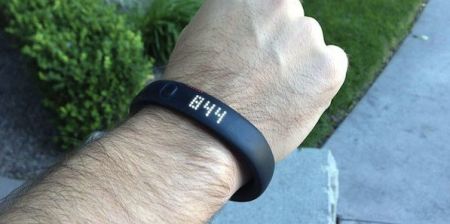Google Glass is not the only technology changing the view of people who embrace new developments in wireless wearables. Devices like Fitbit and Nike’s FuelBand allow users to track health and fitness data via online databases, making it possible to see how many calories have been burned during any given workout. People with chronic diseases like diabetes can share blood sugar readings with their doctors across town thanks to wireless data transmission. In most cases, the data are most relevant to the user of the device and doctors. However, it is often unclear just how broad an audience there is for such personal health information.
To Wear Is To Share
The rewards of wearable technology extend beyond the health-conscious users of gadgets like Fitbit. Doctors can now remotely follow the conditions of chronically ill patients via wireless devices such as pacemakers and blood glucose monitors, significantly reducing the number of office visits. Women trying to become pregnant may be assisted by Duofertility technology, a skin patch and wireless monitor, which sends information to a remote team of fertility experts who determine optimal days for conception.
As with most things, risks exist alongside rewards. Since genetic information is shared by blood relatives, data publicised by one sibling might inadvertently broadcast personal information which another sibling preferred to keep private. Health insurers, cognisant of applicants’ high-risk habits, could raise premiums or refuse coverage for people who eat a lot of red meat, have multiple sexual partners or like to skydive. Aware of the potential for insurers misusing such information, the UK National Health Service has postponed its plans for sharing summarised patient records in a virtual database.
Crowdsourcing Diagnostics
The risks of sharing personal health information arise when users are not fully aware of the implications of broadcasting their biology. When the presentation of personal health information happens willingly and knowingly among a group of people, the benefits can extend beyond the level of individuals tracking calories, to the diagnoses of shared mystery ailments. Activity trackers and wireless medical devices could allow patients to share symptoms with each other in order to arrive at a crowd-sourced diagnosis. At least two sites, CrowdMed and PatientsLikeMe, are already experimenting with the concept.
The line between private and public may be more difficult to determine as wearable wireless technologies reach more users. The benefit of being able to self-monitor fitness and health data, and to share selected information with doctors or other interested parties, will have to be balanced against the risk of unknown surveillance of such vital details in a virtual world.
Latest Articles
Wireless, eHealth, Internet, patient data, IT solutions, wearable technology, personal data
Google Glass is not the only technology changing the view of people who embrace new developments in wireless wearables. Devices like Fitbit and Nike’s Fu...



























